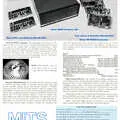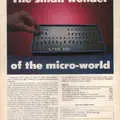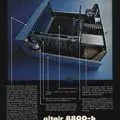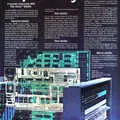
MITS Advert - August 1975
From Popular Electronics
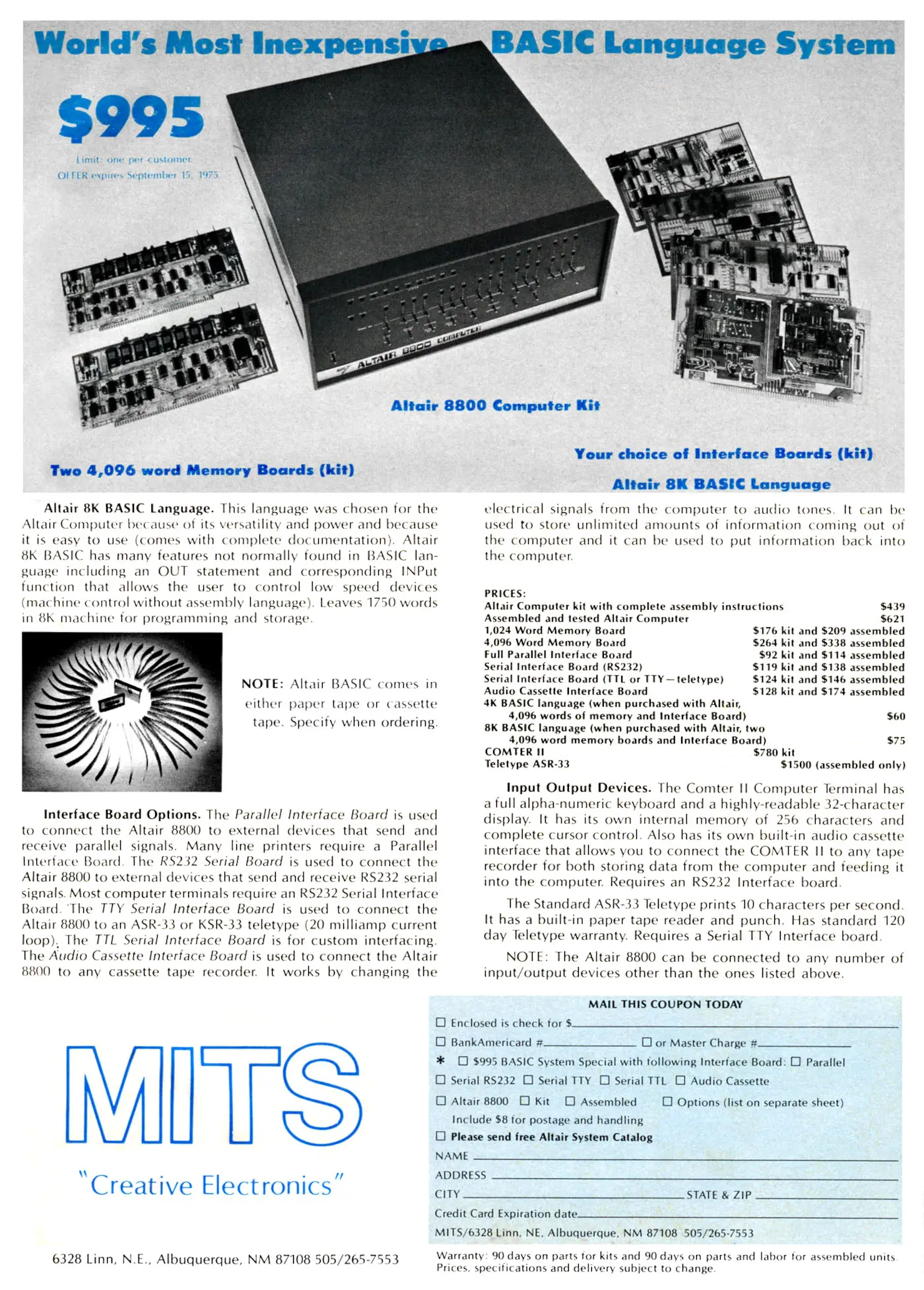
Altair 8800: World's Most Inexpensive BASIC Language System
If there's one microcomputer that can claim to be the grandaddy of the entire industry then it's this - the Altair 8800, from Micro Instrumentation and Telemetry Systems, better known as MITS.
Originally due to be named the PE-8 - for Practical Electronics, the magazine in which it was launched, and 8 for 8-bit - it was instead named after the star Altair, as the editors of the magazine considered the original name to be too dull and that the launch of the computer was a "stellar event"[1].
Developed during 1974 and launched in January 1975, it was built around Intel's 8080, with the company securing a significant bulk discount on the price of the new CPU, paying $75 instead of $300 per unit - the reduction said to be because MITS was at the time by far the largest purchaser of the chip.
The 8080 was Intel's second 8-bit CPU, following on from the earlier 8008, and like its predecessor was originally intended as an embedded processor for use in calculators, terminals and shop tills.
However its improved performance and more-convenient form factor meant that it found its way into many early microcomputers, including those from Processor Technology, Polymorphic and Transam.
It was also the processor that CP/M - the operating system that dominated the latter half of the 1970s and early 80s - was originally written for, before CP/M largely moved over to the Zilog Z80, a processor which was itself effectively an enhanced clone of the 8080.
The Altair was available in kit form - assembly of which was not for the faint-hearted - as well as pre-assembled, and as keyboards and monitors were generally very expensive at the time it was programmed via switches and lights on the computer's front panel - a feature sometimes known as Blinkenlights.
Internally, it was built around the "mainframe" concept - literally a metal chassis/frame with slots for additional plug-in boards. Even the CPU was hosted on a card plugged into this expansion bus, which was originally known as the Altair bus but became known as Standard-100, or S-100 bus, on account of its two-sided 50-pin socket format.
IMSAI picked up on this and released its IMSAI 8080, essentially a clone of the 8800 and even built on the same Altair bus, and in doing so established S-100 as a standard.
Before long, there were hundreds of companies building S-100 cards, and many more microcomputer companies producing computers compatible with the S-100 bus.
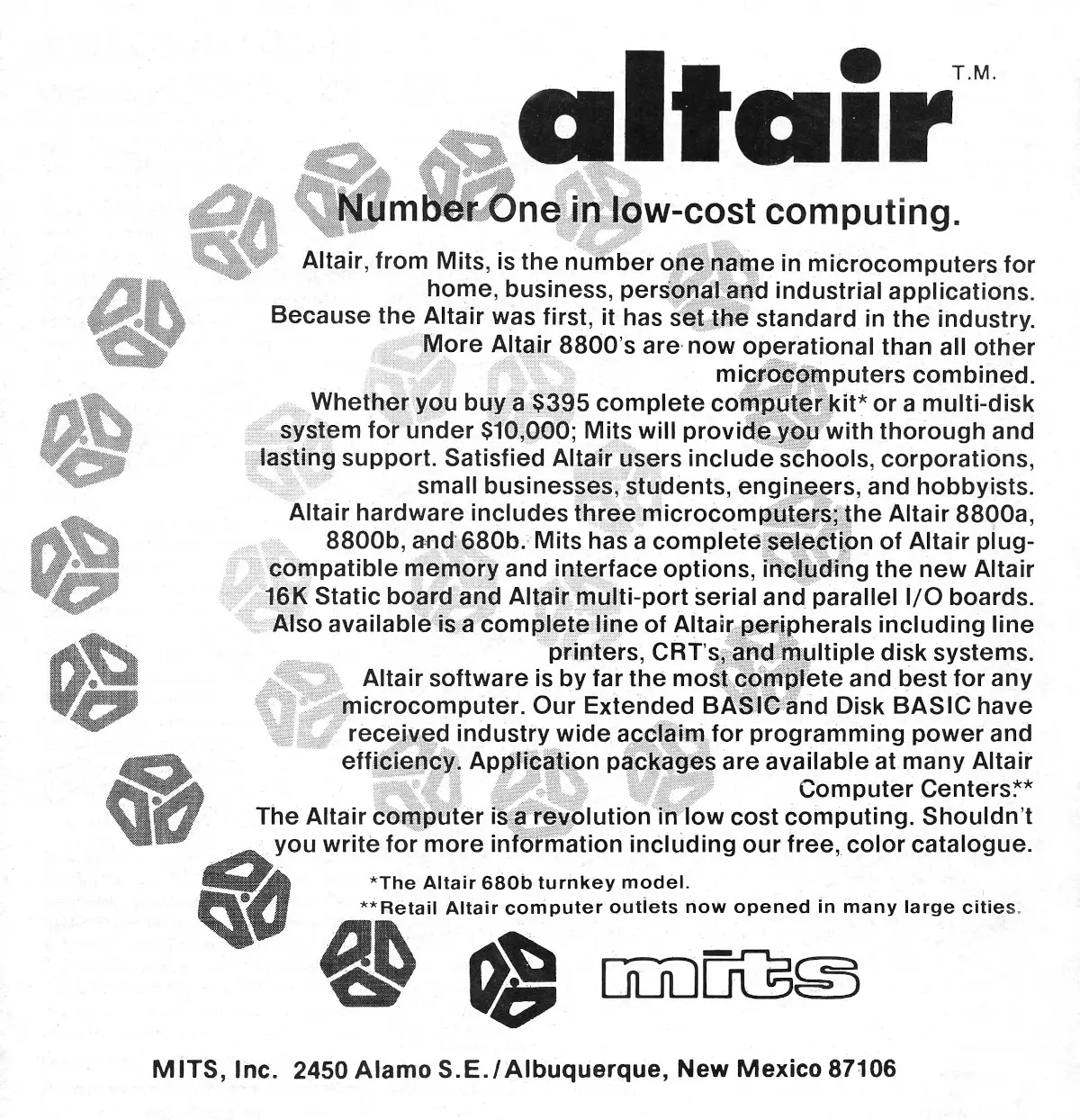
A text-heavy advert, primarily for the Altair, now branded as the 8800a, but also mentioning the 8800b version and the new 680b, based on the Motorola 6800. Prices, as featured in the December 1976 edition of Popular Electronics, ranged from £395 for the "680b turn-key model kit" up to $10,000 for a multi-disk system. That's a not-insignificant £73,400 in 2025 money
When the Altair 8800 was released, a young Paul Allen and Bill Gates speculatively asked MITS if it needed a BASIC interpreter for its new computer. MITS said yes and so Allen and Gates ended up writing a version of BASIC on a DEC PDP-10, which they completed within a month.
Their port of the language was a success - it worked - and so they established a company as a result. That company was Micro-Soft, or Microsoft as it is now known.
The early computer industry was very liberal in its interpretation of copyright and such. Microsoft's BASIC became the de-facto standard language for the Altair, as well as most of the other micros of the era. However, whilst MITS was selling about 1,000 Altair micros a month, Micro-Soft's sales were in the low hundreds[2].
This came to a head when Gates wrote his famous open letter[3] in 1976 to the Homebrew Computer Club complaining about how Micro-Soft's Altair BASIC was being freely copied.
MITS owned a converted camper van which was used to tour the U.S. and demonstrate its products. It had visited the Homebrew Computer Club, but the paper tape that was used to store a pre-release version of Micro-Soft's Altair BASIC disappeared for a while, and at the following week's meeting 50 copies of it appeared in a cardboard box[4].
The bare-bones Altair retailed for $439, or about £3,910 in 2025, whereas the BASIC System - which included BASIC and an interface of choice, either serial, TTY (teletype) or audio cassette - retailed for $995, or about £9,120 now.
Date created: 29 December 2023
Last updated: 08 October 2025
Hint: use left and right cursor keys to navigate between adverts.
Sources
Text and otherwise-uncredited photos © nosher.net 2025. Dollar/GBP conversions, where used, assume $1.50 to £1. "Now" prices are calculated dynamically using average RPI per year.
